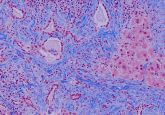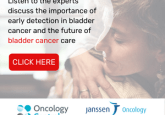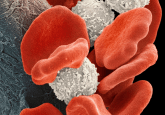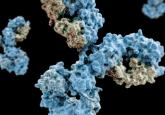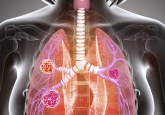The power of intentional mentoring: an interview with Heather Beasley
Hello and welcome to the latest episode of OCTalks, the podcast series from Oncology Central. I am Jade Parker, Senior Editor of Oncology Central. Today I am joined by Heather Beasley who is a post-doctoral scholar at Vanderbilt University (TN, USA). Heather’s current research focuses on the influence of mitochondria morphologies in breast cancer, complementing her previous research on calcium signaling in breast cancer progression. Thank you for joining us, Heather. It is great to have you with us.
To kick this off, could you provide a brief overview of your career to date?
First of all, it is a pleasure to be here with you all. This is a really exciting time. So, my career trajectory is a little odd. I actually started at Auburn University (AL, USA) in Animal Sciences. I wanted to be a vet at that point in time, I really was trying to see what the next step was for me. I worked in an animal clinic for a couple of years and it wasn’t so much taking care of the cute dogs and cats that I loved but I really enjoyed looking in the microscope. That’s where my love for science began.
When you take your dog to the clinic we have to check for parasites. I look under the microscope, and I say “Oh my goodness your dog has a hookworm, I did his urine analysis and I found this really cool crystal” and this was very odd to the vet. So the vet says: “Heather, I think you might want to do a science degree like beyond this point.” I reply: “But you know, I want to be a vet, I am going to the vet school.” To which she replies: “I think your calling is actually in discovery.” That was the best advice I ever got. From there I went on to earn a master’s degree in Biology, which is where I fell in love with physiology. I did a brief fellowship at UCLA where we looked at evolutionary medicine and that’s when I started Grad School then went on to do my PhD in Biomedical Sciences.
During my PhD I joined the Department of Biochemistry and Cancer Biology where I fell in love with signaling within breast cancer. The lab that I joined of Dr. Amos Sakwe was focused on understanding why do breast cancer cells establish residency in other places such as bone? It is really hard, it is rigid. What is it with that and why does that happen? I did some training there for 5 years for my PhD. Currently in my career I am a post-doc at Vanderbilt, where I am continuing on studying calcium signaling and breast cancer as well as really understanding how we can look at organelles within the body; including mitochondria, endoplasmic reticulum. We are looking at those in 3D because it gives us a better understanding as to how the cells or cancer cells function under different disease states.
Thank you for giving us your overview of your career so far. In terms of calcium and bone metabolism that you mentioned; what role does calcium signaling play specifically in breast cancer?
This is super exciting. Anyone that talks more than 5 minutes is going to hear calcium somewhere in there, right? It is the most amazing element because it is in every part of our body. We need calcium for our brain to function, we need calcium for our heart to pump.
The thing that I want to emphasize is that we found during my Grad school education that calcium actually is an important second messenger to allow cancer cells to proliferate more and to thrive better in high calcium environments. Why does that matter? Breast cancer cells have the propensity to move, they like to migrate. So, part of our understanding was looking at how calcium predisposes these cancer cells to really have a preferred region such as the bone to which they move and establish their residency.
What do you do with that information? You can’t stop calcium because then your heart will stop unfortunately. But we are looking for different ways, different pharmacological interventions and therapeutics that can really help patients who may develop hypercalcemia, as unfortunately the statistics are very stark. Patients that have late-stage breast cancer do often develop hypercalcemia and up to 50% of these patients die within 30 days. That is a very stark, very alarming statistic, which was highlighted in the New England Journal of Medicine. c
We are really trying to look at that by studying the calcium sensing receptor, which is super awesome because it is all over the body and this particular receptor can sense calcium and it can either stop things that are happening or actually up regulate things. You can read more about this, but that’s a brief overview that calcium actually can drive cancer cells to thrive and proliferate and to grow and metastasize and become more invasive and that’s what you don’t want in a cancer cell. It is really exciting, I love it, and I am using some of that information to inform some of the work I do in my post-doc as well.
What progress has been made in identifying calcium channels and transporters as potential therapeutic targets for breast cancer?
That is a hot topic and this is not a new phenomenon of understanding how these channels and pumps and players of calcium signaling play a role in cancer progression. The particular receptor that I started with was actually cloned back in the 1990’s. What’s new and what’s novel, is that calcium is not only going through these channels but calcium as a second messenger is turning on a lot of singling pathways that also promote cancer. For instance, you have transcription factors, which are these big proteins that bind to our DNA and tell and drive it forward and calcium actually regulates quite a bit of those. So we’re understanding how calcium plays a role in driving proteins and kinases, which drive cancer progression.
Thinking about all of those, that’s really where the field is progressing, and we are looking at it also by looking at how calcium is regulated within organelles. We have within our cells I guess you could say little power rangers that are doing different functions. I study mitochondria, which are providing energy for the cell and calcium is stored there. We are looking at calcium in that sense to see how it is talking to other organelles. How does this Power Ranger, the pink one talk to the green one? How are they making things happen to give ourselves energy and to do other processes especially during cancer? All of that comes together to really do a lot of things and calcium signaling, I mean honestly it is everywhere. This is a break open book, we made a lot of progress but there is still more to come. Right now the hot areas are obviously going to be these channels, these supporters but also some of the underexplored with the calcium works as far as turning on other things that might drive cancer progression.
Another area that you focusing on in your research is around intentional mentoring. Can you tell us a bit about intentional mentoring and what tactics you would advise mentees and mentors to get the most out of their experience?
Absolutely and I love that you asked that. Intentional mentoring was a paper that our lab published last year and what that paper did was it really helped us to identify all of the mentoring styles of all the co-authors. Everyone has different mentoring styles. Maybe you are a motivational mentor, maybe you are an attentional mentor, maybe you are holistic mentor where you look at different parts and you really are trying to make sure that your mentee has the best skill set.
I am personally a motivational mentor. You probably hear it in my enthusiasm. Everything is enthusiasm, you give me the coffee I am like “wow that was the best coffee of the day!”. That is just the way that I deliver information and so I really want to motivate my students in different ways. I am very candid with my students and our trainees in our lab. I tell them “Listen, I had some difficult times as far as undergrad course work and not making the grades that make me competitive for grad school, which is why I took a couple of years and often worked in the animal clinic. You don’t have to do that. Let me stop you. Let me intervene here as a sophomore and say listen let’s make sure you are not getting anymore C’s. Let’s get B’s and A’s” So, I motivate them with some of my own experiences.
That paper really defines how to be an intentional mentor but it also has a strong focus on underrepresented minorities in STEM. As a black scientist I really must make sure that I am uplifting everyone and diversity goes far beyond our ancestors in our race. It could be neurodiversity; it can really be diversity of thought, how we think about things. So my main goal for my mentee is to use that intentional mentoring to be motivational for them and also to motivate them in ways where they want to succeed on their own and have the tools to do it.
That’s amazing. Yes, your enthusiasm you can feel it and I can imagine that your mentees are also pumped up from you definitely, it is lovely.
Yes, and they are supposed to like it is 6’o clock Heather we need to come down. I am like okay!
No, it is fantastic. That sort of energy is what you need to invigorate and it pushes people forward and gives them that sort of passion for what they are doing in their course. It is lovely.
You touched on there about underrepresented cohorts in that group, so how can intentional mentoring improve attention rates of underrepresented mentees within STEMM?
That is an excellent point. What I do right now is I have really enhanced my presence on social media. I think social media is a way to reach targeted audiences that may be underrepresented in a lot of ways. One way that I reach underrepresented minorities is trying to motivate them through seeing what they may not have envisioned, where they may not have envisioned themselves. I am a big believer of representation matters. If you don’t know that career exists or that expertise exists how can you see yourself in that position? I think a lot of times, I am speaking from personal experiences, there were two options that you are taught in grad school, which is if you are really smart be a doctor or a lawyer. What does being a doctor mean? I am a doctor too, but it is not to treat patients.
So I really want to expose to the masses what a scientific career is about. I tell people all the time it is not about being the smartest person in the class. I was never the smartest in the class. I was the most diligent, I worked really, really hard and when someone tells me no, I am like okay that door closed but I am sure there is a window somewhere. That representation is how I really hope to empower underrepresented minorities in STEM. And they don’t have to be scientists, they could be a tech genius, they can be an engineer and do mathematics. And even if we add an extra M there for medicine, we still as those that are underrepresented, we still make up a very small percentage of these careers. So making sure that they see my day-to-day tasks, seeing what I do, and really see some of my shortcomings. I don’t have it all together but I work diligently to make sure that I at least have something worth looking up to that I can inspire others in some way.
Its for the next generation, isn’t it? So, you see somebody like you in the role then your eyes open to it and you see as more sort of attainable…
Exactly, because it exposes you. You see that and you are like wow that’s an accessible career. Same thing with being a scientist. When you are in grad school and getting your PhD you really only see two tracks, you either go to academia become this professor, or you go to industry and they are kind of like go to industry like that’s some subpar job. Not necessarily. There are different ways where you can be impactful and influential in your career. I think my exposure to all of this careers really opened the door even more. It was like wow I can be that too? Like this PhD wasn’t just so I can count my cells all day and do experiments that sometimes don’t turn into anything. It is really about discovering, and other people can use that to their benefit as well.
How would you like to see the field evolve over the next 5 years?
In the next 5 years, I would love to see an increase in the number of students that go into STEM fields and it is a lot of reason being that we need so many more people to help move the field forward. I think the field has been infiltrated by a lot of people that think the same way. Having diversity of thought is so important in a lot of ways. For instance, you and I, we are diverse in thought because we both – we were going to be vets like who would have thought that these two nerds they wanted to be vets somehow went into this field of cancer. So that’s what we need, we need more people with different ways of thinking. People that are from marginalized background. People that are disenfranchised, people that aren’t your typical students that you see in a photo stock picture on Google. We need different people, different looking people, people that think differently, that use different parts of their brains. That’s important for STEM. I hope in the next 5 years that I don’t make up say 2% of those that are black with a PhD. Maybe we double that, 4%! I will take 4%.
I also see the field of calcium signaling moving the bar forward of really investigating how we can target specific things as cancer progresses. For instance, I mentioned you can’t stop calcium signaling. However, we do have drugs that are US FDA approved that can stop calcium reabsorption, which are bisphosphonates. We know that these drugs exist but I want to publish more high impact papers so that we can have more clinicians really tap into this basic science of that idea. What kind of test can industry look at for patients to gauge how calcium is progressing? Because we know that calcium is going to help the cells thrive. But if we can mitigate that in some way then that leads to overall better survival for the patient, overall better feeling for the patient, because just because the patient is on treatment that’s great, but these patients really have poor response, and its can be very painful sometimes, depending on what treatments and therapies the patients are on. So, finding ways where we can eliminate some of these chemotherapeutics that aren’t as helpful or efficacious as we would expect would be a goal.
I hope that I can publish a really nice paper to which clinicians buy in and they are like “Wait a minute, Beasley et al showed this paper, I need to start testing my patients with this genotype in them.” That’s in my mind of course in the next 5 years but it can happen – that’s the whole thing with these peer review publications. It is exposure, the more people read it, the more they understand how it can benefit them in the clinical setting but also it can benefit us basic scientists to really understand what this information means and how it can apply to our research.
Any closing comments?
I hope that when this is shared everyone can reach out via social media. I connect with a lot of people there, especially cancer advocates. I have a huge following of cancer advocates that I communicate with on a weekly basis. I have conversations with them and because this is February, it is Black History month as well as being Cancer Prevention Month. I will be posting all month on social media about different ways to prevent different cancers. I am really bringing in a lot of guest hosts onto my Instagram live so we can talk about that, across different cancers not just breast cancer.
Thank you so much for speaking with us today, Heather. It has been really insightful to hear about the biology of breast cancer and also how we can improve mentoring for all parties involved. Make sure to follow Heather on Twitter @HKbeasley and on Instagram @dr.heatherkbeasley! Thank you also to our listeners, and if you would like to hear anymore podcasts like this, please head to www.oncology-central.com.
Interviewee profile:
 Heather K. Beasley is a postdoctoral research scholar at Vanderbilt University in the laboratory of Dr. Antentor Hinton Jr. (AJ). Dr Beasley’s research employs various imaging techniques, including 3D microscopic methods, to
Heather K. Beasley is a postdoctoral research scholar at Vanderbilt University in the laboratory of Dr. Antentor Hinton Jr. (AJ). Dr Beasley’s research employs various imaging techniques, including 3D microscopic methods, toinvestigate disease progression using in vitro modeling and patient-derived xenograft models. Thus far in her
postdoctoral training, has earned several awards and fellowships. She is the recipient of the UNCF and Bristol Myers
Squibb, E.E. Just Postgraduate Fellowship in Life Sciences, and the Burroughs Wellcome Fund Postdoctoral
Diversity Enrichment Program award. These two postdoctoral fellowships will fund her research for the next 3
years. Furthermore, Dr Beasley champions diversity in STEM. Complementing her strong scientific publication
record, she has seven peer-reviewed publications that address mentorship and diversity, equity, and inclusion of underrepresented minorities in STEM education and research. Her research reflects her passion for translational research and women’s health, as she is highly sought after as a scientific communicator, panelist, podcaster and social media influencer.
